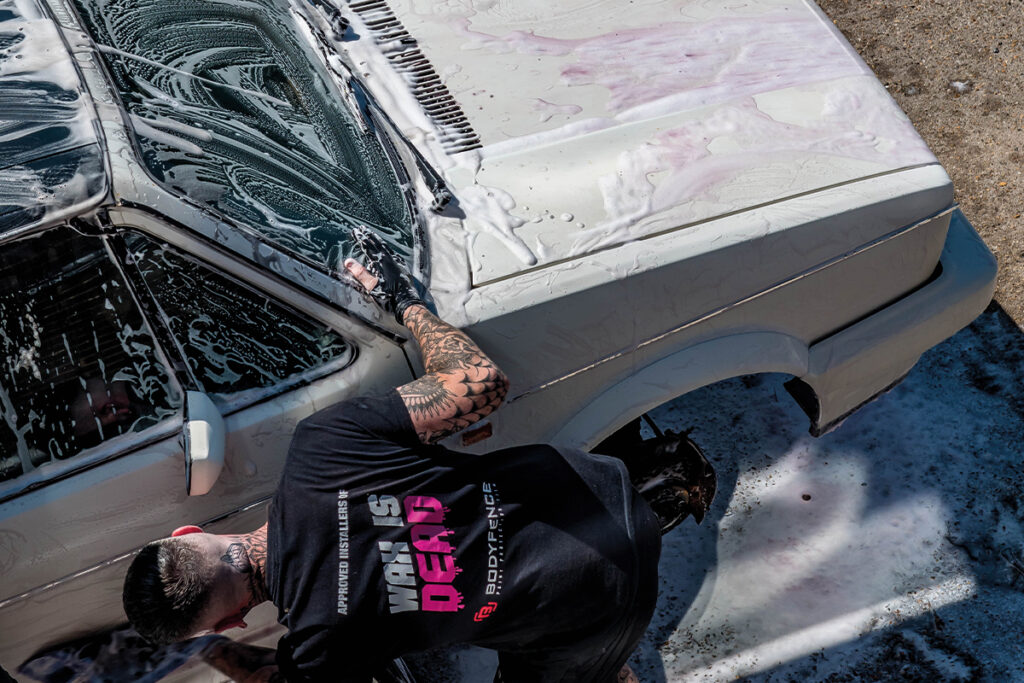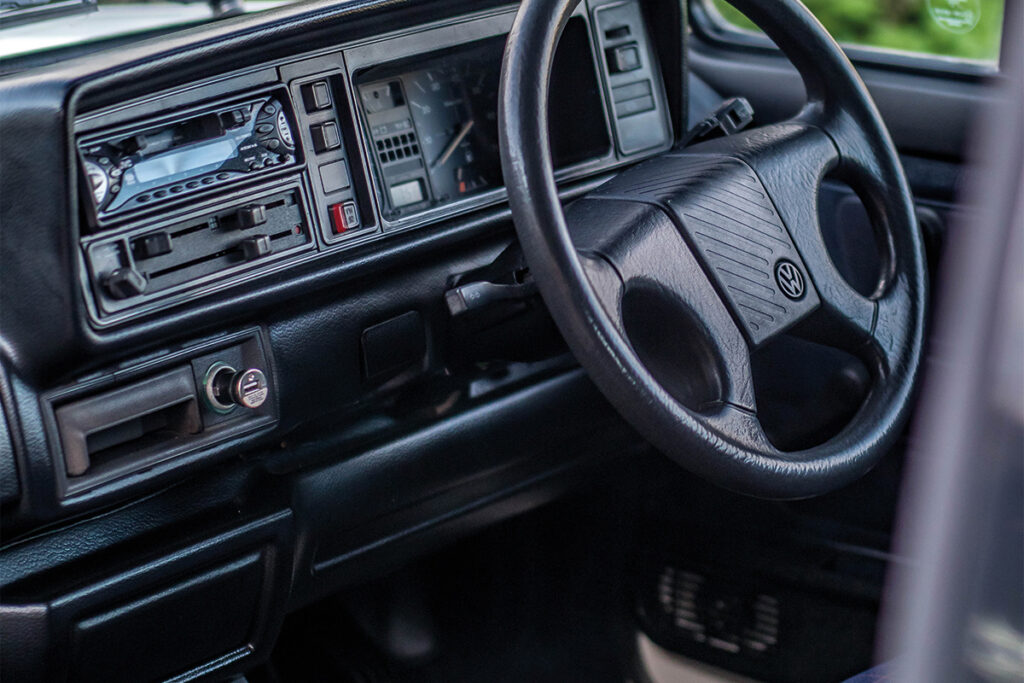
There’s something utterly magical about vintage cars, isn’t there? The sleek lines, the rumbling engines, the unmistakable character that modern vehicles just can’t quite capture. If you’re lucky enough to own a classic beauty, you know the pride and joy that comes with it. But with that privilege comes the responsibility of preserving your automotive gem for years to come.
That’s where detailing comes in. More than just a simple wash and wax, detailing is the art and science of meticulously caring for your car’s every surface, inside and out. By taking the time to properly detail your vintage ride, you’ll not only keep it looking its best, but you’ll also protect it from the ravages of time, the elements, and daily wear and tear. So, let’s dive into the world of detailing and explore the tips and tricks to keep your classic car shining like the day it rolled off the assembly line.
Classic cars hold a special place in our hearts and in automotive history. They represent a bygone era, a time when design and craftsmanship were paramount. These vehicles are more than just modes of transportation; they’re works of art, rolling testaments to innovation and ingenuity. Whether it’s the sleek lines of a ’57 Chevy Bel Air or the muscular curves of a ’69 Mustang, vintage cars capture our imaginations and remind us of the passion and pride that went into their creation.
But beyond their sentimental value, classic cars are also highly coveted by collectors and enthusiasts, making them valuable investments. Properly maintained and preserved examples can fetch staggering sums at auction, making the care and detailing of these vehicles all the more crucial.
Unfortunately, the passage of time is not kind to classic cars. Environmental factors like sun, rain, and road debris can take a heavy toll, causing fading, oxidation, and deterioration of paint, chrome, and other exterior surfaces. Inside, upholstery, dashboards, and trim can become cracked, discoloured, and brittle. Even proper storage isn’t a guarantee against the slow march of entropy.
Neglect and improper maintenance are perhaps the greatest threats to vintage cars. Without regular care and attention, these automotive icons can quickly fall into disrepair, with once-pristine exteriors becoming dull and lifeless and interiors transformed into dusty, cracked wastelands.

Before you dive into the detailing process, it’s essential to have the right tools and supplies on hand. At a minimum, you’ll need:
Having the proper detailing arsenal at your disposal will ensure that you can tackle every nook and cranny of your vintage car with precision and care.
When it comes to detailing products, quality is key. Cheap, harsh chemicals can do more harm than good, stripping away protective coatings and potentially damaging delicate surfaces. Opt for pH-neutral, automotive-grade products specifically formulated for use on classic cars.
For exterior care, look for gentle, non-abrasive cleaners, polishes, and waxes that are designed to enhance and protect your car’s paint and trim. For the interior, seek out upholstery and leather cleaners and conditioners that will nourish and revive aged materials without causing further cracking or fading.
Proper preparation extends beyond just gathering the right tools and products. You’ll also need to create an ideal workspace for detailing your vintage car. Choose a shaded, well-ventilated area, away from direct sunlight and dust or debris. A garage or carport is ideal, but if working outside, consider using a pop-up canopy or shade structure.
Lay down clean tarps or mats to protect the ground and create a comfortable space for kneeling and moving around the car. Ensure you have access to fresh water and a power supply for any electric tools or vacuums you’ll be using.

The first step in any exterior detailing process is a thorough wash and decontamination. Start by rinsing the car with cool water to remove any loose dirt or debris. Then, using a pH-neutral car shampoo and a soft microfiber mitt, gently wash the vehicle from top to bottom, working in small sections and regularly rinsing the mitt.
Pay special attention to areas prone to contamination, like the wheel wells, lower panels, and fuel filler areas. Use dedicated brushes and cleaners to remove any stubborn grime or embedded contaminants.
Once the car is clean, it’s time to address any bonded contaminants and imperfections in the paint. Claying involves gliding a specially formulated bar over the surface to lift and remove embedded particles, overspray, and other blemishes.
After claying, you may need to perform light paint correction to address swirls, scratches, and oxidation. This process involves carefully polishing the paint with progressively finer compounds and polishes, restoring a smooth, glossy finish.

While traditional waxes and sealants offer excellent protection, there’s an even more advanced solution for preserving your classic car’s stunning finish: ceramic coatings. These cutting-edge products create an incredibly thin yet remarkably durable layer of liquid glass on your vehicle’s surfaces, providing unparalleled defence against the elements.
The application process for ceramic coatings is meticulous, requiring a flawlessly clean and prepped surface. Once applied, the coating chemically bonds to the paint, creating a hydrophobic, scratch-resistant barrier that repels water, dirt, and contaminants with ease.
One of the biggest advantages of ceramic coatings is their longevity. While waxes and sealants typically need to be reapplied every few months, a high-quality ceramic coating can last for years with proper maintenance. This not only saves you time and effort in the long run but also ensures your vintage gem remains impeccably protected.
In addition to their incredible durability, ceramic coatings also enhance the depth and clarity of your car’s paint, creating a truly mesmerizing, liquid-like shine that will turn heads wherever you go. The slick, hydrophobic surface causes water to bead and roll off effortlessly, making cleaning a breeze and minimizing the risk of water spots or etching.
While ceramic coatings require a more significant upfront investment compared to traditional waxes and sealants, their superior protection and ease of maintenance make them an invaluable investment for vintage car owners. By creating an virtually impenetrable barrier against the elements, you’ll have the peace of mind knowing that your classic beauty is safeguarded from the ravages of time and the rigors of the road.

The interior of a classic car is often just as important as the exterior, if not more so. Proper cleaning and conditioning of upholstery is essential for preserving the look and feel of aged materials like leather, vinyl, and cloth.
Begin by thoroughly vacuuming the seats, carpets, and crevices to remove any loose dirt and debris. Then, using appropriate cleaners and conditioners, gently clean and revive the upholstery. For leather, use a pH-balanced cleaner and a high-quality conditioner to restore suppleness and lustre. For vinyl, opt for a dedicated vinyl cleaner and protectant to prevent cracking and fading.
Cloth upholstery may require more intensive cleaning, using a specialized fabric cleaner and a soft-bristle brush to work into the fibres.
The dashboard and interior trim of a vintage car can be particularly susceptible to deterioration over time. Sun exposure, heat, and age can cause cracking, fading, and a general loss of lustre.
Start by carefully cleaning these surfaces with a gentle, non-abrasive cleaner specifically formulated for automotive interiors. Avoid using household cleaners or solvents, which can further damage and dry out the materials.
Once clean, consider applying a specialized trim dressing or protectant to restore a rich, natural shine and help prevent future cracking or discolouration.
The carpets and floor mats in a classic car take a beating over the years, accumulating dirt, stains, and odours. To properly clean and revive these areas, you’ll need a dedicated carpet and upholstery cleaner, as well as a powerful wet/dry vacuum.
Begin by thoroughly vacuuming the carpets and mats to remove any loose debris. Then, using the carpet cleaner and a soft-bristle brush, work the solution deep into the fibres, agitating to lift ingrained dirt and stains.
Once the cleaning solution has had time to work, use the wet/dry vacuum to extract the soiled solution, leaving behind fresh, revitalized carpets and mats.
Proper detailing isn’t a one-and-done process – it requires ongoing effort and dedication. Establishing a regular maintenance routine is crucial for keeping your classic car in top condition.
At a minimum, you should aim to perform a full exterior and interior detail every three to six months, depending on your car’s usage and storage conditions. In between full details, make a habit of regularly washing and drying the exterior, vacuuming the interior, and spot-cleaning any problem areas as needed.
When not on the road, proper storage and care are essential for preserving your vintage car’s condition. If possible, keep your classic stored in a climate-controlled garage or storage facility to protect it from extreme temperatures, moisture, and UV exposure.
Use breathable car covers or tarpaulins to shield the vehicle from dust and debris, and consider investing in dehumidifiers or moisture-control systems to prevent rust and corrosion.
Finally, regularly start and run the engine, shift gears, and move the car periodically to keep seals, gaskets, and other components lubricated and functional.

Owning a classic car is a privilege and a responsibility. These automotive icons represent the pinnacle of design, craftsmanship, and innovation from their respective eras, and it’s up to us as caretakers to ensure they’re preserved for generations to come.
By following the detailing tips and techniques outlined in this guide, you’ll not only keep your vintage beauty looking its absolute best, but you’ll also be protecting it from the ravages of time and the elements. Whether you’re a die-hard collector or a weekend cruiser, taking pride in properly detailing your classic car is a labour of love – one that will pay dividends in the form of admiring glances, unbridled enjoyment, and the satisfaction of knowing you’re doing your part to safeguard automotive history.
So grab your supplies, roll up your sleeves, and get ready to transform your vintage ride into a showpiece worthy of its storied heritage. With a little elbow grease and the right detailing know-how, you’ll be the envy of every car show for years to come.
Be the first to know about offers, new products and detailing tips.
We respect your privacy
View Product
In Stock
£1.49 – £13.50
View Product
In Stock
£20.00
Copyright © 2024 Wax is Dead Ltd. All rights reserved.